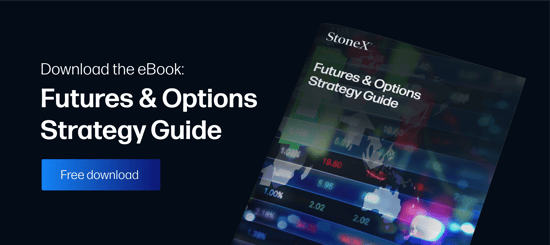In the capital markets, the term “risk” means different things to different people. At the exchange level, risk is a function of systemic liquidity. For institutional investors, it’s a degree of market exposure. For retail traders, risk is the amount of money in harm’s way at any given time. However, no matter your role in the marketplace, one thing is certain: You must actively manage risk.
For instructive purposes, there may be no better place to examine the concept of risk than in the energy markets. Read on to learn more about energy trading and risk management at the exchange, institutional, and retail levels.
Promoting Market Liquidity
As the world’s largest derivatives marketplace, the Chicago Mercantile Exchange (CME) facilitates billions of dollars worth of transactions each business day. One of the CME’s most popular sectors is energy futures and options. Accordingly, West Texas Intermediate Crude Oil (CL), Henry Hub Natural Gas (NG), RBOB Gasoline (RB), and NY Harbor Heating Oil (HO) are the leading energy contracts.
At this point, you may be wondering how an exchange is exposed to risk. After all, they are simply matching buyers to sellers without taking a bullish or bearish position in the markets. Where’s the harm in that?
For derivatives exchanges, counterparty risk and liquidity freezes are two primary areas of concern. The exchange’s core business is to clear, settle, and guarantee all transactions conducted via its facilities. In the event that involved parties default on their obligations, the exchange is responsible for ensuring that markets remain liquid and trade continues uninterrupted. Thus, energy trading and risk management are taken very seriously at exchanges such as the CME.
On a daily basis, the CME takes several steps to guard against catastrophe. First, the CME closely monitors members for signs of financial and operational distress. Second, market participants are required to post performance bonds (margins) to show that they are able to meet their financial obligations. During periods of heightened volatility, the CME is likely to raise margin requirements to guarantee that markets stay as orderly and efficient as possible.
Diversification
If you’ve ever consulted a financial advisor or invested in a 401(k), then you are familiar with the concept of portfolio diversification. Essentially, diversification is the act of spreading investments across a variety of assets to minimize risk. A traditional example of a personal diversification strategy is the 60-40 rule, which dedicates 60 percent of the portfolio to stocks and 40 percent to bonds.
The concept of diversification is applied a bit differently in regards to institutional energy trading and risk management. To fine-tune risk exposure, producers, hedge funds, and banks use energy derivatives in countless ways. For example, a hedge fund may buy energy commodities to hedge against forthcoming USD inflation. Conversely, oil or natural gas drillers may sell energy products with respect to seasonality as a way of managing downside pricing risk.
Aligning Risk to Reward
For the retail trader, clearing transactions or sophisticated diversification strategies are of little concern. The task at hand is straightforward: Make money consistently and for as long as possible. To be successful, retail traders must align risk and reward properly on a routine basis.
If you’re an active retail trader in the energy markets, then volatility is no stranger. Sudden swings in pricing occur frequently in WTI crude oil, Henry Hub natural gas, and RBOB gasoline. To weather the turbulence, a trader must view energy trading and risk management as inseparable. Fortunately, there are a few ways that retail traders can preserve capital while pursuing profits in the live market:
- Use stop loss orders
- Apply leverage conservatively
- Execute trades with positive risk-to-reward ratios
All retail traders share one goal: to make money. And the best way to do so is to cut losses quickly and let profits run. By using modest leverage, positive risk-to-reward ratios, and stop losses, retail traders can maximize their longevity in the marketplace.



